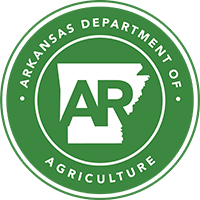Livestock & Poultry
Safeguarding human and animal health, assuring food safety and quality, and promoting Arkansas livestock and poultry industries for the benefit of our citizens
Agriculture / Livestock & Poultry / Regulations / Country of Origin Labeling (COOL) Law
Country of Origin Labeling (COOL) Law
The COOL law provides for the use of producer affidavits to provide origin information to packers
The following information was developed by KLA and a coalition of livestock interests.
The following documents apply to different transactions. Copy and use the one most appropriate for your situation.
Document 1 is a "continuous affidavit" intended for use by feedyards and others supplying cattle directly to packers. Conceptually, feedyards and other direct suppliers will need to reference the origin of specific livestock shipments on showlists or through other communications that offer livestock for sale to the packer. By regulation, records on country of origin must be available for review.
This particular affidavit includes language verifying records will be maintained for one year from the date the livestock are delivered to the packer. The document authorizes USDA to access the records of a feedyard in the case of an audit. Technically, USDA doesn’t have authority to review the records of feedyards or other packer suppliers. However, USDA does have authority to audit packer records. Packers, in accordance with the mCOOL regulation, need access to feedyard documentation to support origin claims. This affidavit authorizes that access.
Document 2 is the "continuous affidavit" intended for use by cow-calf and stocker operators supplying cattle to auction markets, feedyards or other buyers. This document is intended to remain on file with the buyer to verify all livestock from a particular seller is of the specified origin unless otherwise indicated. For example, Joe Local raises his own calves. He normally sells the calves at the local auction market. Joe, therefore, would sign this continuous affidavit to remain on file with the auction. The local auction can use Joe’s affidavit, combined with sales records, to verify the U.S. origin of Joe’s livestock. This assures the local auction it has documentation to pass along to purchasers of Joe’s calves.
For the cow-calf or stocker operator, filing a continuous affidavit with primary purchasers may be the simplest way to provide origin information.
Document 3 is intended for use by cow-calf and stocker operators making an individual transaction. This is another method of documenting origin. It can accompany, or be printed directly on, sales documents that go with the cattle.
Document 4 is a declaration of visual livestock inspection to be kept on file by the seller. The industry has agreed visual inspection for the presence or absence of foreign origin markings constitutes firsthand knowledge of the origin of those animals. Such inspections may be used to support an affidavit of origin.

